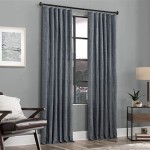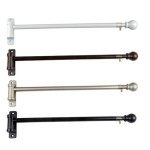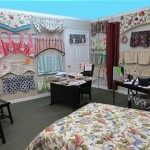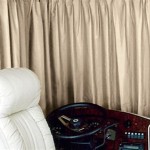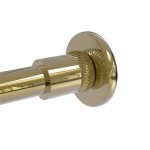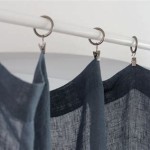Arts and Crafts Style Curtains: A Guide to Authenticity and Design
The Arts and Crafts movement, a significant force in design history, emerged in the late 19th century as a reaction against the industrial revolution and its perceived negative impact on craftsmanship and aesthetic quality. This movement championed handcrafted goods, natural materials, and honest construction, emphasizing the beauty of simplicity and functionality. Arts and Crafts style curtains, therefore, embody these principles, offering a window treatment solution that is both aesthetically pleasing and historically informed. Understanding the key characteristics of these curtains is essential for achieving an authentic and harmonious design within a space decorated in the Arts and Crafts style.
This article will delineate the essential elements of Arts and Crafts style curtains, providing a comprehensive guide for individuals seeking to incorporate this design element into their homes. The aim is to equip the reader with the knowledge to select, create, or commission curtains that are true to the spirit of the Arts and Crafts movement, ensuring compatibility with other design elements within the room.
Key Fabrics and Textiles
The choice of fabric is paramount when creating Arts and Crafts style curtains. Natural fibers are the cornerstone of this aesthetic, reflecting the movement's commitment to organic materials and ethical production. Linen, cotton, wool, and silk are commonly employed, each offering unique characteristics that contribute to the overall look and feel of the curtains. Linen provides a textured, slightly rustic appearance, while cotton offers versatility and affordability. Wool, often heavier and more durable, lends a sense of warmth and substance. Silk, although less frequently used in its pure form due to its formality, can be incorporated in blends to add a subtle sheen and luxurious touch.
Beyond the type of fiber, the weave and weight of the fabric are important considerations. Plain weaves, such as broadcloth or canvas, are often preferred for their simplicity and durability. Twill weaves can also be used, offering a slightly more textured appearance while maintaining a sense of understated elegance. The weight of the fabric should be appropriate for the desired degree of light control and privacy. Heavier fabrics provide more insulation and blackout capabilities, while lighter fabrics allow for more natural light to filter through.
Prints and patterns, if incorporated, should reflect the Arts and Crafts aesthetic. Stylized floral motifs, geometric designs inspired by nature, and traditional patterns like Morris & Co. prints are all appropriate choices. Avoid overly ornate or fussy designs, opting instead for patterns that are clean, simple, and repeating. Earth tones, such as greens, browns, and muted reds, are characteristic of the movement, but other natural colors, like blues and yellows derived from natural dyes, can also be incorporated.
Consider the durability of the chosen fabric. Arts and Crafts designs emphasized lasting quality. Selecting material that can withstand light exposure, washing, or dry cleaning is an investment in longevity. This also aligns with the movement’s aim to value things for the long term and challenge the trend of short-lived industrial items that were common in the late 19th century.
Design and Construction Techniques
The design and construction of Arts and Crafts style curtains prioritize simplicity and functionality. Avoid excessive embellishments and elaborate drapery styles. Instead, focus on clean lines, straightforward construction techniques, and details that showcase the quality of the materials and craftsmanship. Panel curtains, hung straight from a rod, are a common and appropriate choice. These can be either flat panels or slightly gathered for added fullness, depending on the desired effect.
Headers, the upper edge of the curtain where it attaches to the rod, should be simple and understated. Rod pockets, tabs, or grommets are all suitable options. Avoid elaborate pleating or ruffles, as these are not in keeping with the Arts and Crafts aesthetic. The length of the curtains should also be carefully considered. Curtains that graze the floor are a common choice, creating a clean and tailored look. Puddling, or allowing the curtains to pool on the floor, is generally not recommended, as it can appear too fussy and detract from the simplicity of the design.
Handmade details, such as hand-stitched hems and hand-applied trim, can add a touch of authenticity and individuality to the curtains. Consider using contrasting stitching colors or decorative trims made from natural materials, such as wood or leather. Appliqué, the process of applying fabric shapes to the surface of the curtain, can also be used to create subtle and stylized designs. Ensure that any embellishments are carefully chosen and thoughtfully applied, avoiding excessive ornamentation.
The hardware used to hang the curtains should also be in keeping with the Arts and Crafts aesthetic. Wrought iron rods, wooden poles, and simple metal brackets are all appropriate choices, avoid polished brass, opting for finishes that are more muted and understated. The hardware should be functional and aesthetically pleasing, complementing the design of the curtains and the overall style of the room.
Consider the lining of the curtains. Lining provides insulation, protects the fabric from fading, and adds weight and body to the curtains. A cotton or linen lining is a suitable choice, ensuring that the lining is compatible with the face fabric in terms of care and maintenance. Blackout linings can also be used for bedrooms or other spaces where maximum light control is desired.
Color Palettes and Pattern Integration
Color plays a crucial role in establishing the authentic Arts and Crafts ambiance within a room. The movement favored natural, earthy tones that reflected the landscapes and materials that inspired its designs. Dominant colors included shades of green (sage, olive, forest), brown (ochre, russet, umber), and muted reds (terracotta, brick, cranberry). These colors evoke a sense of groundedness, warmth, and connection to the outdoors. Subtler accents could incorporate yellows (mustard, ochre) and blues (indigo, slate), often derived from natural dyes, further reinforcing the organic aesthetic.
When integrating patterns into Arts and Crafts curtains, simplicity and stylization are key. William Morris, a prominent figure in the movement, pioneered distinctive floral and plant-based designs that remain emblematic of the style. These patterns often feature repeating motifs of stylized leaves, flowers, and vines, rendered in a way that emphasizes line and form rather than realistic representation. Geometric patterns, inspired by natural forms, were also prevalent, incorporating simple shapes and repeating elements.
The scale and placement of patterns should be carefully considered. Larger patterns can be used effectively in larger rooms, while smaller patterns are better suited for smaller spaces. Avoid overly busy or complex patterns, as these can detract from the simplicity and elegance of the Arts and Crafts aesthetic. When pairing patterned curtains with other textiles in the room, such as rugs and upholstery, ensure that the patterns complement each other and create a cohesive visual harmony.
Monochromatic color schemes, using variations of a single color, can also be effective in Arts and Crafts interiors. This approach creates a sense of serenity and understated elegance, allowing the focus to remain on the quality of the materials and the craftsmanship of the design. When using a monochromatic scheme, consider incorporating textures and patterns to add visual interest and prevent the space from feeling flat or lifeless.
Consider the existing color palette of the room when selecting colors for the curtains. The curtains should complement the other colors in the room, creating a harmonious and balanced composition. Use color swatches and samples to ensure that the colors work well together in the space, taking into account the lighting conditions and the overall atmosphere. Color can be a powerful element in capturing the essence of Arts and Crafts, and informed choices will result in enhancing the aesthetic of the room.

Craftsman Era Curtains Arts Crafts Homes

Art Nouveau Curtains Livingroom Custom Lined Curtain High End Stickley Craftsman Bungalow Bedroom Etsy

Looking Back At The Arts And Crafts Movement Interior Design

Craftsman Era Curtains Arts Crafts Homes

Arts And Crafts Style Curtains

Craftsman Curtains Living Room Drapes Floral Stickley Home William Morris Arts Crafts Victorian Panels Etsy
Curtains In The Arts Crafts Style Ann Wallace For Prairie Textiles

Portière

William Morris Seaweed Arts And Crafts Curtains Etsy New Zealand

Travis Colour Curtains Can Update Craftsman Style

